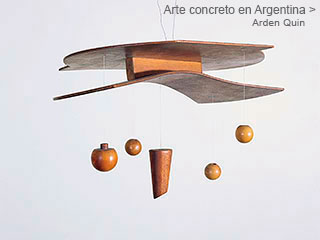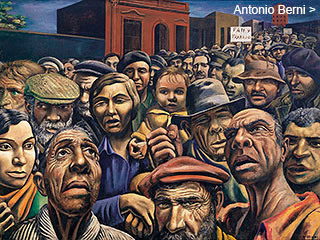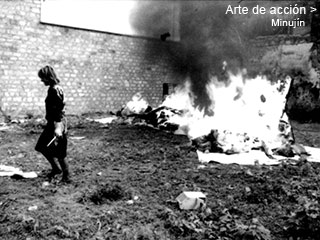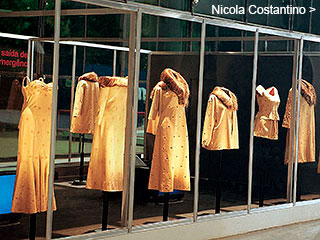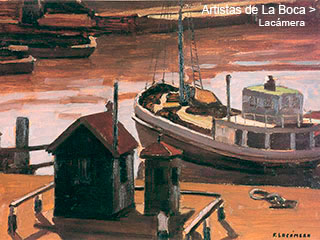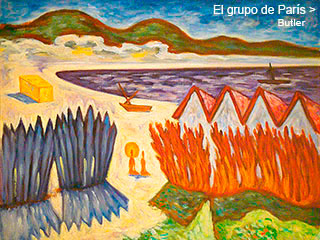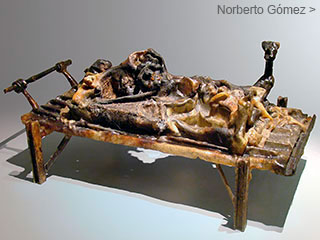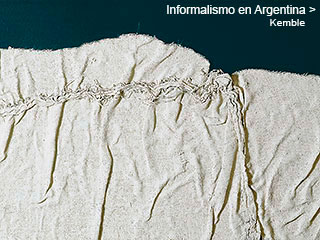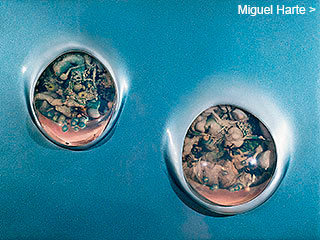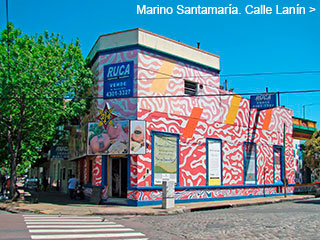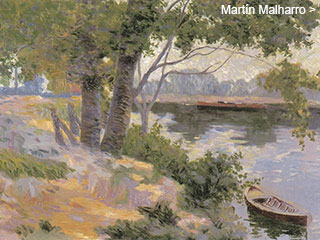Menú
Algunos dossiers
Concrete Art
in Argentina
in Argentina
by
Adriana Lauria
January 2003
January 2003
Abstraction asserted itself in Argentina through the achievements of groups such as Arte Concreto-Invención, Madí and Perceptismo, which developed their activity since the second half of the 1940s. These groups constituted the first organized national avant-garde and made their aesthetics known to the public through exhibitions, magazines, manifestoes, leaflets, lectures, etc.
Documents
Alfredo Hlito
Alfredo Hlito. "Representación e invención", in Boletín de la Asociación Arte Concreto-Invención. Buenos Aires, December 1946, N° 2, p. 7.
• The perceived or represented image of an object does not exhaust the object’s reality; it only abstracts from it one of its properties (that of being perceived or represented), but without showing anything about the composition of its nature, and even less about its multiple relations.
• If everything that can be perceived or represented exists somehow in reality, the truth is that reality does not boil down to being perceived or represented.
• Purely perceptive consciousness, besides, is not a principle of renewing praxis. In practice, man does not restrain to his sensitive experience; to believe so would be to pretend to lock him in the individual cave Bacon spoke about. It is transforming reality what counts, not distorting it.
• Artistic representation reveals itself in the most restricted orders of practice, as an expression of such individualities that do not succeed to resolve in a concrete way, for they lack the elements inherent to real activity.
• Artistic representation departs from a narrow interpretation of praxis, which consists of conceiving the subject in a passive opposition as to the world. “He does not conceive human activity itself as an objective activity –Marx says in one of his critical notes to Feuerbach–: practice is only conceived and fixed by him in its vile, Judaic, phenomenal form. Consequently, he does not understand the practical revolutionary activity.”
• Representative art entirely expresses the postulates of a coarse and primitive “materialism”, thoroughly outdone by Marxism.
• The representative technique limits to “reflect” the world; that does not imply the effective knowledge of it; at most (frequently), it is an expression of a subverted awareness of the world.
• Not containing the elements inherent to real activity, the process of representation resolves in the alienation of the object. “The man who exiles from nature (the object) –Feuerbach says– creates himself an arbitrarily subjective way of being... for he wants to destroy the necessary relation with the object”. The alienation of the latter is the outcome of the artificial duplication of the subject by itself (representation), agreeing with the representation of God within the religious psychology.
• While it derives from the perception of the real (objects’ stimulus), representation does not necessarily returns from the subjective to the objective, as it happens with the concrete activity, but it duplicates subjectivity, and in the result of that duplication it seeks to see the object.
• Well now, as the object is the necessary term of the subject’s real activity, the alienation of the object expresses the real alienation of the subject. “The alienation of man in relation to his product involves the alienation of man in terms of generic and social being, as long as –according to Marx– what defines man in terms of generic, conscious being is the practical production of an objective world, the transforming of the inorganic nature, even being free from physical requirement.”
• Representative art involves the alienation of man in terms of generic (social) being for it is the artistic expression of such alienation.
• It is not an accidental fact that every historical form of alienation (Religion, State, Class) has profited from representative art to dissolve in man his social energies.
• Marie-Alain Couturier, O.P., writes in his book “Art et Catholicisme”, “...Cubist art, as well as Non-representative art, beyond its genuine value, is essentially unreligious: if religious art characterizes by referring to the supernatural world (alienation), how could this art that does not refer but to the natural world, that keeps in itself all the reasons for joy (apprehension), be religious?”
• “Knowledge goes from the abstract particular to the concrete universal”, says Lefevbre. The economic theory of value is abstract; yet, it is concrete. A Marxist cannot be surprised that our art be abstract and concrete at a time. Most abstract theories in physics and mathematics destroyed Hiroshima, and were the reactionary forces’ maneuvers thwarted, those very theories would serve as the basis of a new era in the technical history of humanity.
For, as Engels said, the spirit bears the curse of matter.
• It is not a question of “tuning” art according to the new circumstances, that is, of exchanging a representation style for another, a symbols system for another; it is a question of impugning the fundamentals (internal needs) of representation and symbolism; in short, of everything that refracts, distorts the objective intellection of the real world.
• The current contradiction of representative painting lays in the fact that it essentially demands to know how to paint, regardless of what is painted: apples, compote bowls, famished beings, healthy shaped beings enduring intense inner dramas, etc. There is bad painting (frequently) made with the best intentions towards humanity and vice versa. What can be said to that?
• Where on earth have you seen yellow, blue or green horses? –It is the painting what has to be considered here. –Then, what the hell...?
• The artistic feat can be conceived or apprehended in abstraction of what it represents; hence that the crisis of representative art does not mean the crisis of art, but only that of representation.
• Discoveries can be the result of a fortuitous encounter (theory of factors); invention can never be that.
• Invention is the wholly opposite of any form or sub-form of alienation (homo ludens, Pascal).
• Inventing is a function of the practical consciousness.
• This function does not bring along to project oneself neither out of the world (evasion) nor into a self-alienated consciousness (contemplation). Inventing means to INTRODUCE IN THE WORLD THROUGH EXPERIMENTING AND INDUSTRY what did not exist so far.
• Let not be said we have not done anything new. Concrete art does not close the history of art; neither this one has existed to make Concrete art possible in a given moment. However, if it is true that art progresses in the sense human societies do, the only way is the way encouraged by Inventionismo.


